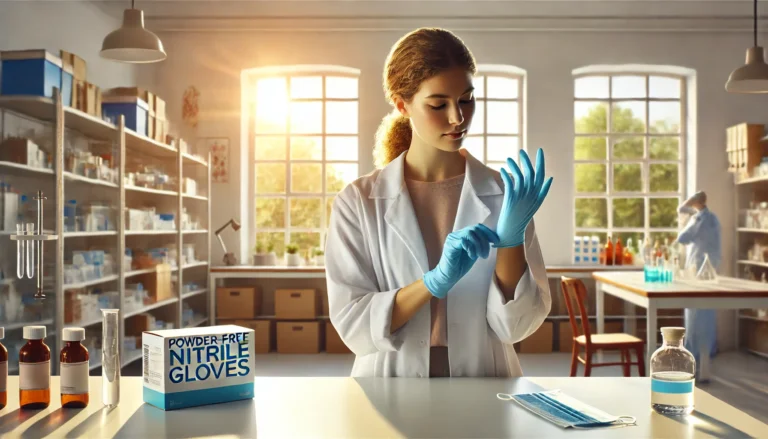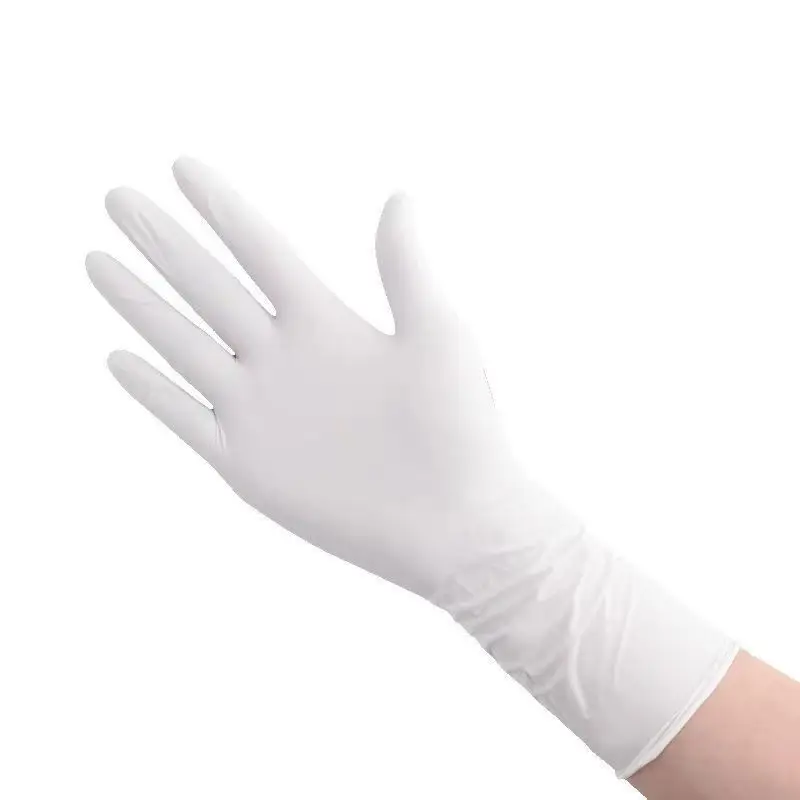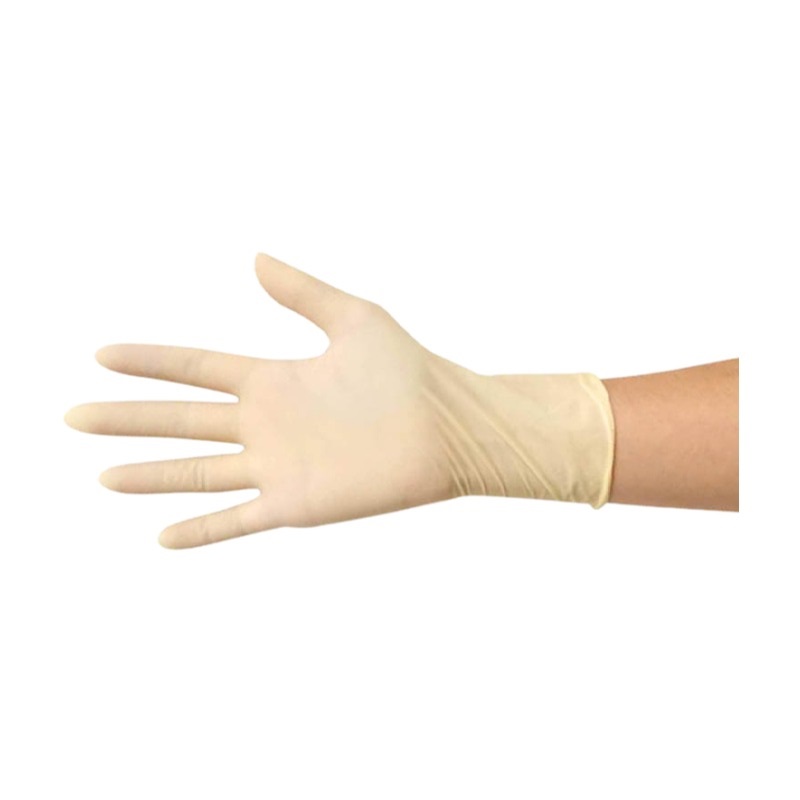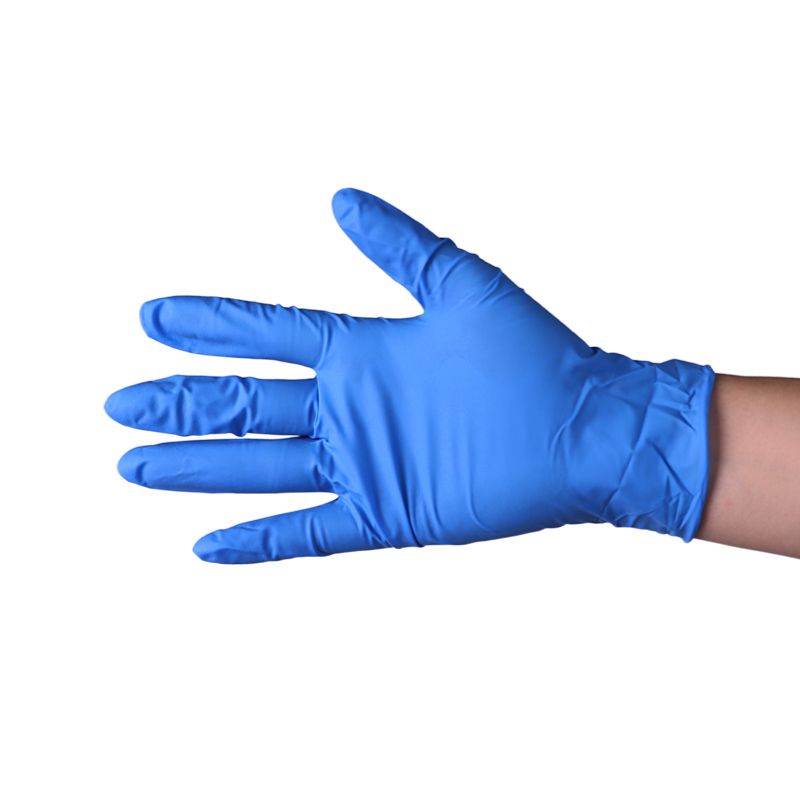What Is Latex
Latex is the stable emulsion of natural rubber polymers in water. Obtained from the sap of the Hevea brasiliensis tree, natural rubber latex (NRL) is prized for its elasticity, comfort, and tactile precision—features critical in many medical and laboratory settings.
However, NRL contains allergenic proteins that can trigger reactions from mild dermatitis to life-threatening anaphylaxis. Studies estimate 8–17% of healthcare and industrial workers face latex sensitivity risks. As a result, many institutions ban powdered latex gloves, and a shift toward non-latex alternatives—especially nitrile—is now standard in global safety protocols.
What Is Nitrile Latex—and Why It’s Still “Latex”
Nitrile gloves are made from synthetic nitrile butadiene rubber (NBR)—a petrochemical copolymer—dispersed in water, forming nitrile “latex.” Though the “latex” in its name refers to its emulsion nature, nitrile latex contains no plant-derived proteins and is therefore free from natural latex allergens.
| Feature | Natural Latex | Nitrile Latex |
|---|---|---|
| Source | Rubber tree sap | Acrylonitrile + Butadiene |
| Contains proteins? | Yes | No |
| Renewable | Yes | No |
| Biodegradable | Partial | Usually no |
Thus, nitrile gloves—despite being a “latex” emulsion—are clinically considered latex-free due to the absence of allergenic proteins.
Are Nitrile Gloves Truly Latex-Free?
Yes—100% free from natural latex proteins. Clinical and regulatory standards (FDA, OSHA) classify nitrile gloves as safe alternatives for healthcare and other allergy-sensitive environments.
Nitrile gloves have demonstrated allergy incidence under 1%, vastly lower than latex alternatives. A global study confirms nitrile remains the preferred material due to its low immunogenic profile.
Can You Still Have Reactions to Nitrile?
Rarely, but not due to latex.
Most irritations stem from Type IV contact dermatitis, linked to chemical accelerators—such as thiurams and carbamates—used in vulcanization. These reactions can cause rashes, blisters, and itching hours after use.
Fortunately, accelerator-free nitrile gloves eliminate these chemicals and significantly reduce allergic reactions. Ansell reports these gloves offer the same durability and barrier protection, while dramatically improving skin tolerance.
Note: A 2021 patch test study identified rare allergenic compounds (e.g., CEDMC) even in accelerator-free gloves, suggesting absolute zero risk is rare, but risks are greatly minimized.
How Nitrile Compares with Latex & Vinyl
| Feature | Nitrile | Latex | Vinyl |
|---|---|---|---|
| Allergic risk | ✅ Minimal | ❌ High | ✅ Low |
| Puncture strength | ✅ Superior | Moderate | Poor |
| Chemical resistance | ✅ Excellent | Moderate | Very Poor |
| Tactile sensitivity | ✅ Very good | ✅ Superior | ❌ Low |
| Comfort & thinness | ✅ Thin but durable | ✅ Natural feel | ❌ Loose fit |
| Cost & sustainability | Mid/high | Moderate/renewable | Low |
Nitrile combines allergy safety, comfort, and robustness, making it a top choice in healthcare, labs, food processing, and industrial work.
Accelerator-Free Nitrile: The Best Option?
Accelerator-free nitrile gloves remove both natural allergens and harsh chemicals, offering superior skin compatibility without reducing protective performance.
This makes them especially valuable for:
-
Healthcare professionals wearing gloves all day
-
Laboratory personnel exposed to chemicals
-
Food handlers with frequent glove use
-
Anyone with persistent skin sensitivity
Conclusion
-
Are nitrile gloves latex-free? Yes—the term “latex” refers only to the emulsion form, not allergenic proteins.
-
Are they allergy-safe? Largely yes—with <1% reaction rate—but choose accelerator-free for maximum safety.
-
Are they versatile? Absolutely—durable, thin, chemically resistant, and comfortable across industries.
Frequently Asked Questions
Q1: Can nitrile gloves cause skin reactions?
A1: Rarely—and usually due to accelerators, not latex. Switching to accelerator-free variants solves most issues.
Q2: Are nitrile gloves biodegradable?
A2: Standard nitrile is synthetic and does not biodegrade; some accelerator-free blends are designed for landfill degradation, but check the packaging.
Q3: Do nitrile gloves expire?
A3: Yes. Shelf life is typically 3–5 years—store cool, dry, and away from UV for maximum protection.
👉 Ready for both safety and performance?
Explore our Accelerator-Free Nitrile Gloves—trusted by medical, lab, food, and industrial professionals.
➡️ Visit Myesde Gloves and choose the best gloves for your needs.







